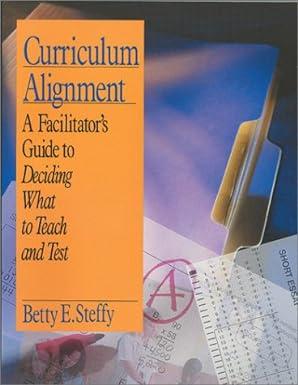Question
Activation Exercise 10-2: Double-Declining Balance Depreciation Terms and Definitions The three factors that determine depreciation expense for a fixed asset are the initial cost ,
Activation Exercise 10-2: Double-Declining Balance Depreciation
Terms and Definitions
The three factors that determine depreciation expense for a fixed asset are the initial cost, the expected useful life, and the estimated residual value. The initial cost of an asset is . The expected useful life is . The estimated residual value is .
Understanding the Business Transaction
Depreciation expense measures . A company should record an expense for the cost of long-term fixed assets . The double-declining balance method provides for of depreciation expense during each year of the assets useful life.
Jasmine Company purchased equipment on January 1, 20x1. This is the only equipment that Jasmine company owns, and it has the following information:
| Initial cost | $190,970 | ||
| Estimated residual value | $13,670 | ||
| Expected useful life | 10 | years | |
| Total estimated hours of useful life | 18,560 | hours | |
| Depreciation Method | Double-Declining Balance | ||
| Hours operated during 20x1 | 2,320 | ||
| Hours operated during 20x2 | 1,940 |
When required, round your answers to the nearest dollar.
Jasmine Company would report $ of depreciation expense in its December 31, 20x1 income statement, and $ of depreciation expense in its December 31, 20x2 income statement.
Recording in the Accounting System
Prepare the journal entry that Jasmine would make to record depreciation on December 31, 20x1:
| Dec. 31 | |||
Prepare the journal entry that Jasmine would make to record depreciation on December 31, 20x2: When required, round your answers to the nearest dollar.
| Dec. 31 | |||
The accumulated depreciation account is a(n) account that is reported on the and represents . At December 31, 20X1, Jasmine Company would report equipment on its balance sheet at $, which is the .
Financial Statement Impact
Presley Company purchased equipment on January 1, 20x1. This is the only equipment that Presley company owns. The following information relates to this equipment:
| Initial cost | $400,000 |
| Depreciation Method | Double-Declining Balance |
Click here and use the sliders provided for (1) expected useful life, and (2) estimated residual value to answer the following questions:
| 1. | Assume that the equipment has an expected useful life of 10 years and an estimated residual value of $40,000. |
| a. | Determine depreciation expense for the year ended December 31, 20x1. |
| $ |
| b. | Determine depreciation expense for the year ended December 31, 20x2. |
| $ |
| c. | In 20x2, depreciation expense will be the depreciation expense in 20x1. |
| d. | Determine the book value of the equipment that should be reported on the December 31, 20x1 balance sheet. |
| $ |
| e. | As the equipment is depreciated each year, the book value of the equipment that is reported on the balance sheet will . |
| 2. | Assume that the equipment has an expected useful life of 5 years and an estimated residual value of $70,000. |
| a. | Determine depreciation expense for the year ended December 31, 20x1. |
| $ |
| b. | Determine depreciation expense for the year ended December 31, 20x2. |
| $ |
| c. | If the estimated residual value remains the same, an increase in the estimated useful life of the equipment will result in depreciation expense. |
| d. | Determine the book value of the equipment that should be reported on the December 31, 20x2 balance sheet. |
| $ |
| e. | If the estimated useful life remains the same, an increase in the estimated residual value of the equipment will result in depreciation expense in years 20x1 and 20x2. |
Step by Step Solution
There are 3 Steps involved in it
Step: 1

Get Instant Access to Expert-Tailored Solutions
See step-by-step solutions with expert insights and AI powered tools for academic success
Step: 2

Step: 3

Ace Your Homework with AI
Get the answers you need in no time with our AI-driven, step-by-step assistance
Get Started


